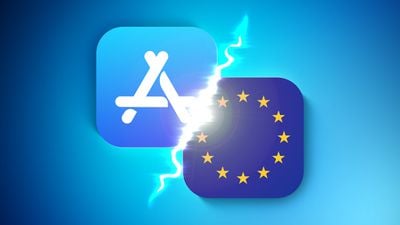Apple is making additional changes to its app ecosystem in the European Union to comply with the terms of the Digital Markets Act. The default browser selection experience that's already in place will be updated, Apple will allow EU users to set defaults for more types of apps, and core iOS apps like Messages and the App Store will also be deletable.

iPhone owners in the EU can already set different defaults for the browser, mail app, app marketplace, and contactless payments, but Apple is going to allow users to select new defaults for phone calls, messaging, password managers, keyboards, call spam filters, navigation, and translation. That means, for example, that EU users will be able to choose an app like WhatsApp instead of Messages to be their default texting app, or a mapping app like Waze to be the default instead of Apple Maps.
Apple has not yet provided insight into just how setting a new default will work for messaging apps, navigation, password managers, and more, and the company plans to provide more information as the launch date for these features approaches. New defaults for phone calls, messaging, password managers, spam call filters, and keyboards will be able to be set starting with an update to iOS 18 coming later this year, while the option to set different navigation and translation defaults will be implemented in spring 2025.
To handle the multitude of new default apps that can be set, Apple is adding a Default Apps section to the Settings app. It will list all of the defaults available to each user for easy management.

Along with setting new apps as defaults, Apple will let users delete core apps. The App Store, Messages, Camera, Photos, and Safari apps will be able to be deleted, so it's essentially just the Settings and Phone apps that will not be able to be removed in the EU. If a user deletes the App Store app, it will be able to be reinstalled from the Settings app if desired, while the other apps can be reinstalled from the App Store.
With iOS 17.4, EU users were able to select a default browser from a randomized list of the top 12 browsers in their country. In a future update to iOS 18, the browser choice window will pop up again if a user has Safari set as their default. The new browser selection experience will include a descriptive line about the browser, as well as the option to set a default browser right from the choice window. If a user selects a browser that is already installed on their device, it will open automatically, otherwise there will be a downloading icon and the browser will open after it's downloaded. Users will also need to scroll through the full list of available browser options before being able to make a selection.

Note that the option to set a default browser will only show up again for users who have Safari as the default, so if an EU user has already selected Chrome, the choice window will not pop up again with the iOS 18 update coming later in the year. Users will also see the selection interface on all of their devices rather than just one, and it will show up when Safari is opened for the first time after updating. Setting a new default when Safari is on the user's Home Screen or Dock will see the new default browser replace the Safari icon.
The browser default popup will also be displayed when migrating to a new device if the user previously had Safari set as the default.
The changes that Apple is making are applicable for iPhone and iPad users in the European Union with updates to iOS 18 and iPadOS 18, and will not be available in other countries like the United States.
More information on the changes can be found on Apple's developer site.





















